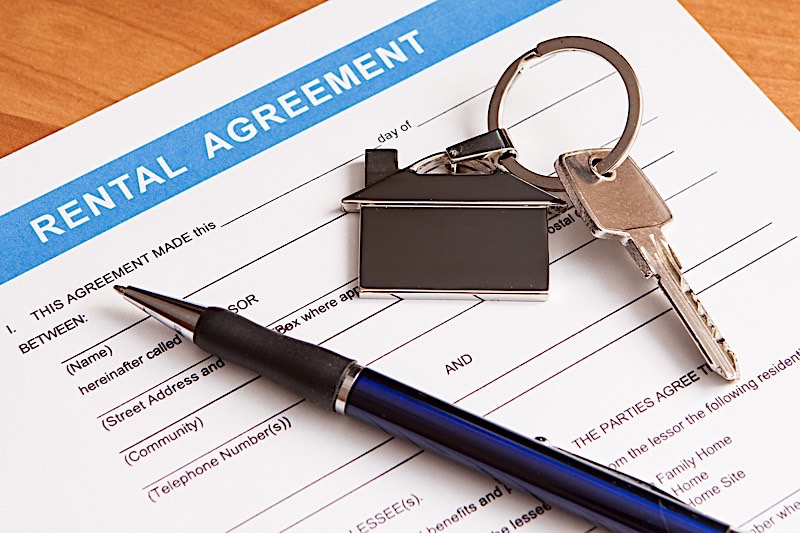For most landlords, the first day of the month is synonymous with rent payments. Renters are typically used to this schedule, and lease agreements reinforce this timeline. However, not all move-in (or move-out) dates align with the start of the month. In these cases, you may need to do some calculations to offer prorated rent for tenants.
Prorated rent is commonly used in the real estate industry to accommodate the transition between lease terms in a rental property. There are a few systems you can use to calculate the right amount to charge, but it is crucial to have a protocol in place. Keep reading to learn more about when to use prorated rent and how to calculate it.
What Is Prorated Rent?
Prorated rent is a discounted rental rate based on the number of days in a month the unit will be occupied. For example, if a tenant is moving in on the 7th of the month instead of the 1st, they will typically pay prorated rent. This allows the tenant to only pay for the days they will be in the unit rather than the entire month. This is extremely common when transitioning a unit from one lease to another, as it often takes time to clean and renovate a unit between tenants.
Landlords are not obligated to offer prorated rent, but it is extremely common for rental properties. In some instances, landlords may be able to avoid it if they get new tenants into the property in the first few days of the month. Some property owners will only offer it for move-ins after the 10th of the month, while others offer it anytime after the 1st day of the month.

When To Prorate Rent
Prorated rent is typically offered when a move-in or move-out date occurs in the middle of the month. When tenants apply to live in a property, they will specify their ideal move-in date. If this is after the first date of the month, landlords can accommodate the request by offering prorated rent. The initial rent payment could be due at the time of the lease signing and then reset to the typical monthly rent at the start of the following month.
Prorated rent can also be used when tenants want to move out after the end of a month. It is not uncommon for tenants to request an additional few days or weeks in the rental unit after the conclusion of the lease. This extra time can help tenants manage the move-out and cleaning process. In these cases, landlords could work with tenants to establish an amount for any time added to the end of the lease term.
Similarly, landlords can ask tenants when their planned move-out date is and offer prorated rent if they leave before the lease ends. While landlords are not required to do this, it could incentivize the tenant to hand the keys over sooner — allowing them to get the property ready for the next tenant. Generally speaking, prorated rent can be used to help landlords and tenants with the move-in or move-out process.
[ Thinking about investing in real estate? Register to attend a FREE online real estate class and learn how to get started investing in real estate. ]
How To Calculate Prorated Rent
There are a few different ways to calculate prorated rent. Many property management companies will already have a protocol in place for determining the correct amount, but if you manage a rental yourself the decision will come down to personal preference. Here are a few different methods on how to calculate prorated rent:
-
Days in a month
-
Banker’s month
-
Days in a year
Prorate By Number Of Days In A Month
The most common method for determining prorated rent is to use the number of days in a month. Simply divide the total monthly rent by the number of days in that month, then multiply the daily rent by the number of days the unit will be occupied. Here is the formula you would use:
(Monthly Rent / # of Days in the month) x # Of Days Unit Is Occupied = Prorated rent
Let’s say the monthly rent is $1800, and your tenants are moving in on May 10. The daily rent for May would be about $58. If they move in on the 10, the unit will be occupied for 21 days. By multiplying $58 by 21 days, we can determine the prorated rent for May would be about $1161.
Prorate By Banker’s Month
Another method to prorate rent relies on a banker’s month, which standardizes the number of days in a month. The banker’s month method assumes that every month has 30 days and allows landlords to calculate prorated rent using the same formula each month. The formula for prorating rent with a banker’s month would look like this:
(Monthly Rent / 30) x # Of Days Unit Is Occupied = Prorated rent
The benefit of using this method is that it is more straightforward and often creates simplicity for landlords when doing calculations. That being said, using a banker’s month instead of the exact number of days can result in a slightly increased or decreased rental amount for the month. For example, if the prorated month is shorter, landlords could collect slightly more than in a month with more days.
Prorate By Number Of Days In A Year
Rent can also be prorated using the number of days in a year. This method is typically used when prorating rent at the start of a year-long lease and requires landlords to calculate the annual rent for the unit. This can be done by multiplying the rent by 12, before dividing it by the number of days in the year. The formula for prorating rent by number of days is as follows:
[(Monthly Rent * 12) / 365] x # Of Days Unit Is Occupied = Prorated rent
Prorating rent by the number of days in a year can occasionally yield a slightly higher rental rate when compared to the number of days in a month. Let’s return to the example of a tenant moving in on the 10th of May where the monthly rent is $1800. The annual rent on this unit is $21,600, making the daily rent about $59. In this example, the rent for May would be about $1183 (which is slightly higher than the calculation using the number of days in the month).

Tips For Prorating Rent
Like any property management responsibility, prorating rent will get easier in time. The key is to develop a system that works and stick to it. Here are some additional tips to help as you learn how to prorate rent:
-
Use the Same Calculation Method For All Units: Decide which of the above formulas makes the most sense to you and adopt it as your official method. Changing the way you calculate prorated rent from unit to unit will only cause confusion as you communicate with tenants and as you manage your books.
-
Specify the Prorated Rate in the Lease: Don’t surprise your tenants with the prorated rental rate. instead, communicate it clearly before the lease is signed and then include the amount owed within the lease. This will prevent any confusion on behalf of the tenants, while also protecting you and the tenants during the transaction.
-
Double Check Your Numbers: Everyone makes mistakes, but no one wants those mistakes to undermine their monthly income. Look over your calculations before deciding on the prorated rental rate. You may also want to double-check the number of days in the month or year depending on what formula you decide to use.
-
You Are Not Responsible for Move-In Changes: There may be situations where a tenant agrees to move in at the beginning of the month, only to change their mind later and ask for a prorated rental rate. Remember that once these numbers are in writing, you are not responsible for changes the tenant makes.
-
Watch Out For Math Mistakes: Do you remember learning about rounding in school? Be careful not to round up until the very end of your calculations, as this may impact your final number. Luckily, most calculators will allow you to type the entire formula in at once so you can avoid this temptation altogether.
Summary
In an ideal world, tenants would always move in at the start of the month and move out at the end of a lease. Unfortunately, this is not always the case, and situations arise where you may need to recalculate rental rates. All landlords should understand how to prorate rent, so they are prepared when these requests come up. There are three main ways to do so, and finding the right one will all come down to your personal preferences. By developing a system ahead of time, you can simplify one more responsibility and get back to focusing on other aspects of your investment business.
What is your favorite method to calculate prorated rent? Share in the comments below.
Ready to start taking advantage of the current opportunities in the real estate market?
Click the banner below to take a 90-minute online training class and get started learning how to invest in today’s real estate market!

